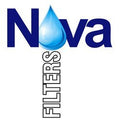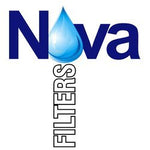Reverse Osmosis
What Does Reverse Osmosis Remove? |
Reverse osmosis is one of the most trusted and effective methods of water filtration. This process can remove hundreds of harmful contaminants. However, it is not the only option. UV filters, water ionizers, and carbon filters can all be used to filter water, albeit in different ways. |
But what does reverse osmosis remove? And what are the benefits of reverse osmosis? We will answer both of these questions and more, but first, let’s look at how reverse osmosis actually works:
How does Reverse Osmosis Work?
In essence, reverse osmosis is a process in which solids are removed through a liquid via filtration. Water (or any other liquid) is passed through a semipermeable membrane. When this happens, the contaminants are removed from the liquid, leaving behind clean drinking water.
However, the term can still sound a little confusing. Let’s look at each part of “reverse osmosis” to get a better idea of how it works.
Osmosis
Osmosis occurs naturally all of the time. The process of osmosis involves weaker (containing fewer particles) saline solutions migrating to stronger (containing more particles) saline solutions. This can even occur in our bodies. Kidneys absorbing water from the bloodstream is a prime example of osmosis.
Semipermeable Membrane
Technically speaking, a semipermeable membrane is simply a barrier that only impedes certain particles. More specifically, a semipermeable membrane allows small particles to get through. This is how water is able to pass through the filtration system, while most contaminants cannot. A sponge is one common, everyday example of a semipermeable membrane.
Reverse Osmosis
Now, when we put the two words together, it’s easier to understand what they actually mean. The process of osmosis gets reversed so that a solution with more particles can pass through the membrane and come out with fewer particles. The size of the particles determines what will and won’t pass through. That said, different reverse osmosis filters can remove different sizes of particles.
What Does Reverse Osmosis Remove?

Reverse osmosis does not recognize individual contaminants. Instead, it simply removes particles that are too large to pass through the membrane. Nonetheless, semipermeable membranes are extremely efficient and can generally remove 98% (or more) of contaminants in a liquid.
While tap water is treated, this doesn’t mean that it is completely clean. It’s true that a public water system does remove the vast majority of harmful contaminants, but it is not a catch-all system. There are plenty of impurities that get looked over during this process. This is why a reverse osmosis filtration system is a good investment; it can finish the job that the public water system started.
Here are just a few of the most harmful contaminants that a reverse osmosis filtration system can remove with a rate of 98% or more:
- Arsenic V
- Chromium 3
- Barium
- Cadmium
- Copper
- Radium
Does Reverse Osmosis Remove Fluoride?
In short, yes. A Nova Reverse Osmosis System (and most other high-quality RO systems) can remove up to 95% of fluoride from drinking water. The vast majority of US residents consume fluoride through their public water systems. The introduction of fluoride was meant to reduce tooth decay in children. However, it is not used where governments have recorded similar declines in adolescent tooth decay thanks to fluoride toothpaste. It is not added in The Villages.
Though fluoride is harmless in small doses, it can lead to long-term issues with higher doses. It is not necessary to have both high-fluoride drinking water and fluoride toothpaste. A reverse osmosis filtration system is a great way to reduce your fluoride intake and prevent potential health problems down the road.
Does Reverse Osmosis Remove Chlorine?
Yes, reverse osmosis does reduce the amount of chlorine in drinking water. This is mostly thanks to the carbon filter present in the Nova filtration system. A carbon filter removes most chlorine that would otherwise damage the semipermeable membrane. While you probably don’t want a lot of chlorine in your drinking water, it’s important to remember why chlorine is present in the first place.
Chlorine is a useful disinfectant that can remove waterborne viruses and bacteria. Though chlorine is not harmful to humans in small doses, it can become harmful when combined with other toxic by-products that may be present in water. Additionally, most people do not like the taste or smell of chlorine, as it resembles a mild form of bleach.
Does Reverse Osmosis Remove Minerals?
Yes and no. A reverse osmosis filtration system does remove some minerals, though many minerals are able to pass through the system undetected. Many of the minerals that are good for your health are small enough to remain in your drinking water after filtration.
However, some minerals (like sodium) are filtered out with reverse osmosis. While salt can add some additional flavor to your water, it’s probably not something that you want to consume in large amounts. On average, Americans consume far more sodium than they should, so taking it out of the drinking water is the first step toward lowering overall sodium-intake rates.
In The villages FL, the TDS ranges 185-225, however if a Nova Reverse Osmosis (RO) filter is installed the TDS will typically reduce to about 15.
Additional contaminants listed by CDC
- Reverse Osmosis Systems use a process that reverses the flow of water in a natural process of osmosis so that water passes from a more concentrated solution to a more dilute solution through a semi-permeable membrane. Pre- and post-filters are often incorporated along with the reverse osmosis membrane itself.
- A reverse osmosis filter has a pore size of approximately 0.0001 micron.
- Reverse Osmosis Systems have a very high effectiveness in removing protozoa (for example, Cryptosporidium, Giardia);
- Reverse Osmosis Systems have a very high effectiveness in removing bacteria (for example, Campylobacter, Salmonella, Shigella, E. coli);
- Reverse Osmosis Systems have a very high effectiveness in removing viruses (for example, Enteric, Hepatitis A, Norovirus, Rotavirus);
-
Reverse Osmosis Systems will remove common chemical contaminants (metal ions, aqueous salts), including sodium, chloride, copper, chromium, and lead; may reduce arsenic, fluoride, radium, sulfate, calcium, magnesium, potassium, nitrate, and phosphorous).
What are the Benefits of Reverse Osmosis Filtration?
There are numerous benefits of reverse osmosis filter systems. Some of the most compelling reasons to invest in a reverse osmosis filter system include:
- Better Health
- Better Taste (coffee & tea for example)
- Better Smell
- Cleaner water
- Reduction of heavy metals
- Reduction of toxic contaminants
Reverse Osmosis vs. Water Softener: What's the Difference?
You might have heard of water softener, but it is often misunderstood. The term itself sounds rather strange, but it makes sense once you know the science behind it. So, what’s the difference between a reverse osmosis whole house water filter systems and a water softener?
Water Softener
In order to understand water softener, you must first understand the concept of “hard water.” Hard water affects the majority of the water supply in the United States. This water contains high levels of minerals like calcium and manganese. Hard water has a higher concentration of these minerals, while soft water has a lower concentration. A water softener lowers the concentration of these types of minerals.
While a No Salt or salt free system does not!
Most importantly realize a softener doesn't filter water it only removes calcium & magnesium
Reverse Osmosis | Whole House Water Filter
A reverse osmosis and or a whole house water filter system makes water safe to drink by removing harmful contaminants. If you only use water softeners, your water won’t be treated for chlorine, lead, arsenic, and other harmful contaminants.
As you can imagine, the best solution is to use in order of importance:
- Whole House Water Filter
- Reverse Osmosis RO
- Water Softener
of both water softeners and a reverse osmosis filtration system in your home. However, it will also depend on your needs, budget and circumstances. If you only want to improve the taste, smell, and cleanliness of your drinking water, then you should go with a Nova reverse osmosis filtration system.
Conclusion
So, what does reverse osmosis remove? While it can’t remove everything, it can remove quite a bit. Reverse osmosis cleans up your drinking water by removing harmful minerals and contaminants. Additionally, it is one of the most comprehensive and cost-effective ways to ensure the safety of your drinking water.

